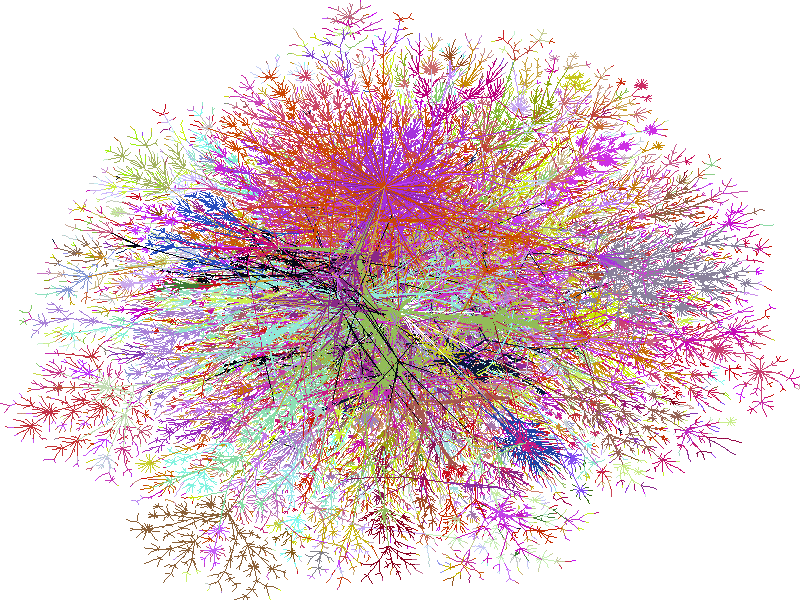This time, I came back with fear and loathing.
O.K. That's an over-exaggeration. I think it's more like apprehension and unease. However, to make my point, let me tell you about the opening day presentation by Clay Shirky. Mr. Shirky is an American writer, consultant and teacher on the social and economic effects of internet technologies. He wrote a book titled Here Comes Everybody: The Power of Organizing Without Organizations. I can save you the $17 on Amazon by giving you the five word summary of what the book is about: Group action just got easier.
To understand why this worries me, consider the major movements in the area of communications.
First, you had the printing press and movable type. Second, you had the rise of point to point communications such as the telegraph and telephone. Third, you had encoded media other than print - images, sound, moving images and sound. Finally, there was the advent of broadcastable messages - radio and television. Each of these media innovations share the same flaws - they were either good at getting one message out to a large group of people in a broadcast fashion, or they were good at allowing two people to have a conversation. What they couldn't provide was a platform that allowed large groups to talk to and collaborate with each other. Actually, some would argue the last major invention that changed the way in which groups got things done was the conference table:

What social media allows for are large scale conversational patterns between larger numbers of participants than ever before imagined.
Instead of the internet being a broadcast medium, social media tools allow for one "media type" to easily transition to the next. Social media makes the internet look like this famous picture by Bill Cheswick:

Each of these branches is an internet connection. When you look at this plotted map, you can see that the internet is actually connected throughout, like a giant conversation.
Here is an example of how, using social media, a conversation is transformed from looking like the table to looking like the Cheswick photo (I apologize in advance if this whole thing looks and sounds like an elementary math word problem):
- Dick sends an e-mail question about what to do on Friday night to Jane.
- Jane responds that he doesn't know, and copies a handful of other friends (Sally, John, Steve) via e-mail in her response.
- Sally "tweets" the question to her Twitter account where 15 other people respond to her message with suggestions.
- John posts the question on his Facebook Page, where one of his friends sets up a Facebook Event Page, and sends formal invites and requests for suggestions on the "wall".
- When everyone shows up at the decided upon location, people start taking pictures (and/or video) with cell phones, and tags them and loads them real time to the internet using services like YouTube, Vimeo or Flickr.
- Dick finds the pictures and videos, and posts them for discussion the next week on his blog.
The internet, using the free tools available for social media, opens up a conversational pattern that can connect all forms of media seamlessly with very little skill needed. People have adopted new types of technology and it has made group action much easier.
So, why would any of this make me uneasy? Imagine for a moment that Dick and Jane weren't planning a Friday night out with friends, but instead were planning a meeting about professional liability issues (or medical devices, or office property ratings - whatever your association might represent)? Where will your association fit in with this new model? Will you be able to harness the energy they bring to the table? Will you continue to be relevant as information becomes more and more transparent?
This is the link to the full Clay Shirky presentation:
http://www.fusionproductions.com/digitalnow/09-upload/Video/DN09-openingkeynote.wmv
I'd love to hear how your association is positioning itself to fit within this new media model.
1 comment:
Unease doesn't come close to describing my feelings on this subject some days. Yet, I will embrace the future!
Our staff has started this conversation just this month. We are looking at setting up our association on LinkedIn and begin setting up groups. Groups for our roundtables, future leaders, etc.
We have added video clips to our web site reviewing our conventions and legislative activity. More audio clips are being added and will be used for promotions.
We will see how this is accepted and then move again. This will be VERRRRY interesting because we represent a traditional industry that has been slow to embrace technology but the next generation is there chopping on the bit to move their businesses into 2010.
Post a Comment